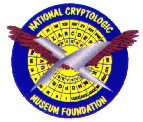
|
|
Tulane Engineering Forum |
||||||||||||||||||||||||||||||
|
James D. Giattina
Jim is currently the Director of the Gulf of Mexico Program Office, located at
the Stennis Space Center, MS. The Gulf Program is a consortium of government
agencies (State, local, and federal), non-government organizations
(business/industry, agriculture, and environmental), and citizens dedicated
to protecting the Gulf of Mexico in ways that are consistent with and support
the economic well being of the region.
Jim received a Master of Science degree in aquatic ecology from the Virginia
Polytechnic Institute and State University and a Bachelor of Science degree
in biology from the University of Alabama. He has 15 years of experience in
both regulatory and non-regulatory programs with the U.S. Environmental
Protection Agency. Before becoming the Director of the Gulf Program Office in 1996,
Jim served as the Deputy Director of the Great Lakes National Program Office
in Chicago, Illinois. Jim and his wife, Christine, have three children -- Matthew,
Mary, and Emily.
Presentation Topic:
The Role of Information Technology in Large Marine
Ecosystem Management for the Gulf of Mexico
By James D. Giattina
Summary
Effective use of information (i.e., its collection, storage, retrieval, analysis,
and presentation) is essential to efforts to understand, predict, and respond to
trends in critical environmental indicators. This is especially true and
challenging for an ecological system as large and diverse as the Gulf of
Mexico -- the ninth largest body of water in the world. This presentation
will provide an overview of current efforts underway to effectively use
information and information technology in order to address key environmental
problems affecting the Gulf of Mexico, as well as, efforts to provide the
scientific foundation for a better understanding of how this magnificent
and dynamic system functions.
|
|||||||||||||||||||||||||||||||






